Why Visit Aruba? 12 Reasons To Love The ‘One Happy Island’
This website uses affiliate links which may earn a commission at no additional cost to you. As an Amazon Associate I earn from qualifying purchases.
Updated: 22nd November 2023
Bon Bini means welcome in Papiamento — one of Aruba‘s two official languages — and not only will you hear these warm words frequently, but you’ll genuinely feel them. This friendly, laid-back energy is perhaps the best reason to visit Aruba, surpassing even the island’s soft-white crushed coral sands. ‘One Happy Island’ might be a marketing phrase, yet unlike most taglines, this one is no exaggeration.
I absolutely adored my one week visit to Aruba, and even though the bath-like waters and swathes of soothing sand are arguably the main draw, they are far from the sole reason why Aruba is worth visiting. Adventures await in the forms of water sports and arid inland national park explorations; culture pulsates through independent artisan stores, Arawak cave drawings, and around the mural-heavy streets in San Nicolas, and the annual carnival celebration provides one of the Caribbean’s best celebrations.
If you’re still on the fence about which Caribbean destination is best for you, allow me to fight the corner of this pocket-sized island and share my top reasons to visit Aruba.
The headliner: beeline-worthy beaches
It’s a given that the reason most people visit Aruba is for the star attraction: incredible beaches. And boy, are these shores irresistible. No matter if you’re seeking sun-kissed sands backed by atmospheric beach bars or more serene, secluded mangrove-enveloped bays, the island’s coast, does not disappoint.
Having been to a few different Caribbean islands now, the beaches in Aruba have been by far my favourite. The sand is delightfully soft and white due to the crushed corals, the beachfront can stretch as far as the eye can see, and unlike Jamaica, for example, every one of them is free and open to all. This is especially great as you can take long walks along the shoreline without having to come inland to get around a private resort.
A couple of my favourites include pristine and peaceful Mangel Halto, a little below the capital city, and Arashi Beach, where I snorkelled with turtles. Beyond the California Lighthouse, the northern sand dunes are equally magical. Even the main resort destination of Palm Beach felt pretty relaxing, and as the ‘high-rise’ section is minimal and well-managed, you never feel like you are lounging in front of a concrete jungle of resorts.
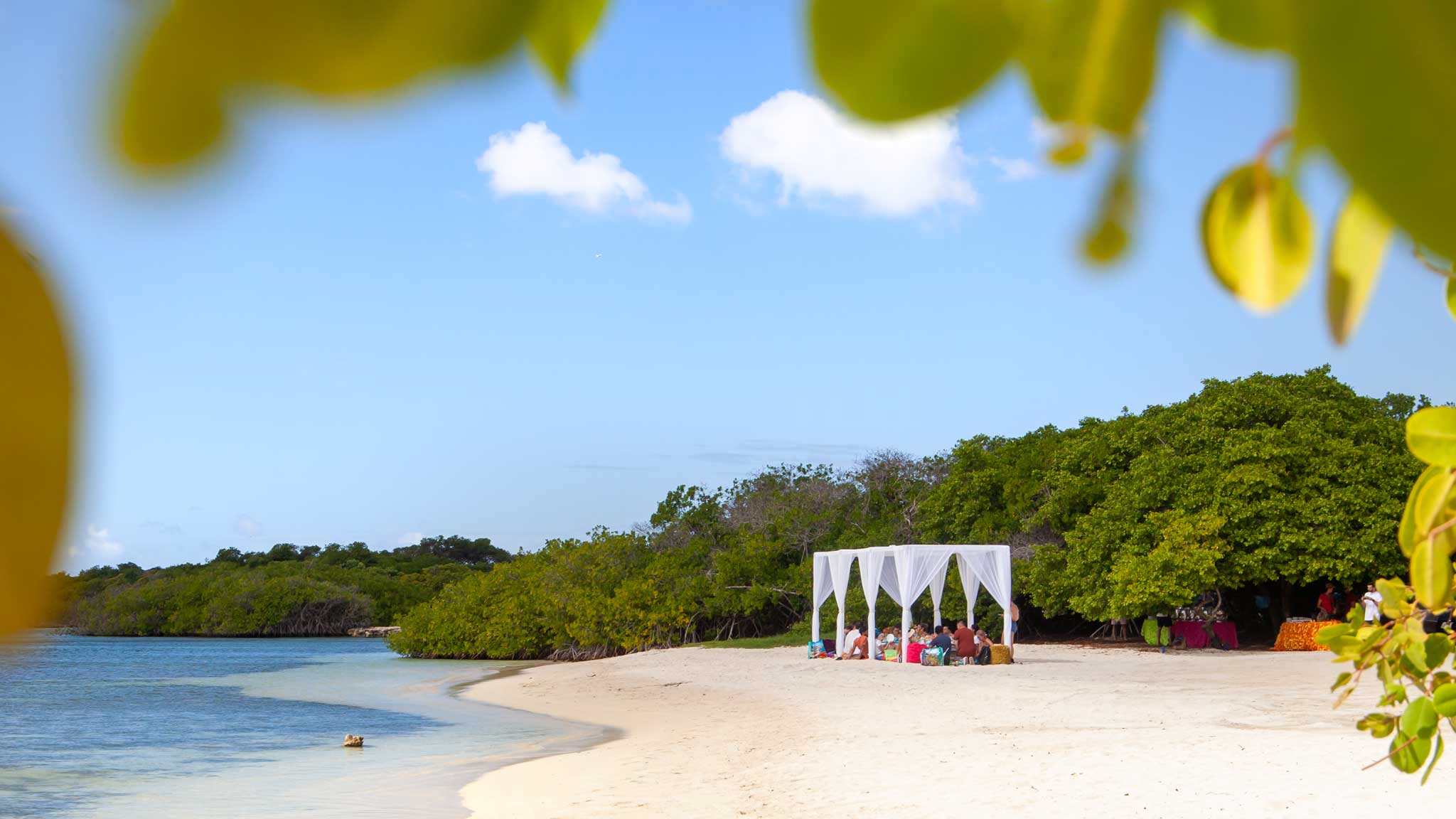
Year-round dreamy temperatures
Aruba sits just below the hurricane belt, making it a safe year-round destination and one of the best islands to visit in the region. It can’t be overstated enough why this is one of the major reasons to visit Aruba, as safety — especially if travelling with kids — is as important as sunny.
Even though rainfall and some storms can occur between September and December, the warm temperatures remain for the whole year (except between mid-high 20c on average). Showers are often short, meaning it’s a destination you can plan to visit anytime, including when there are offseason deals.
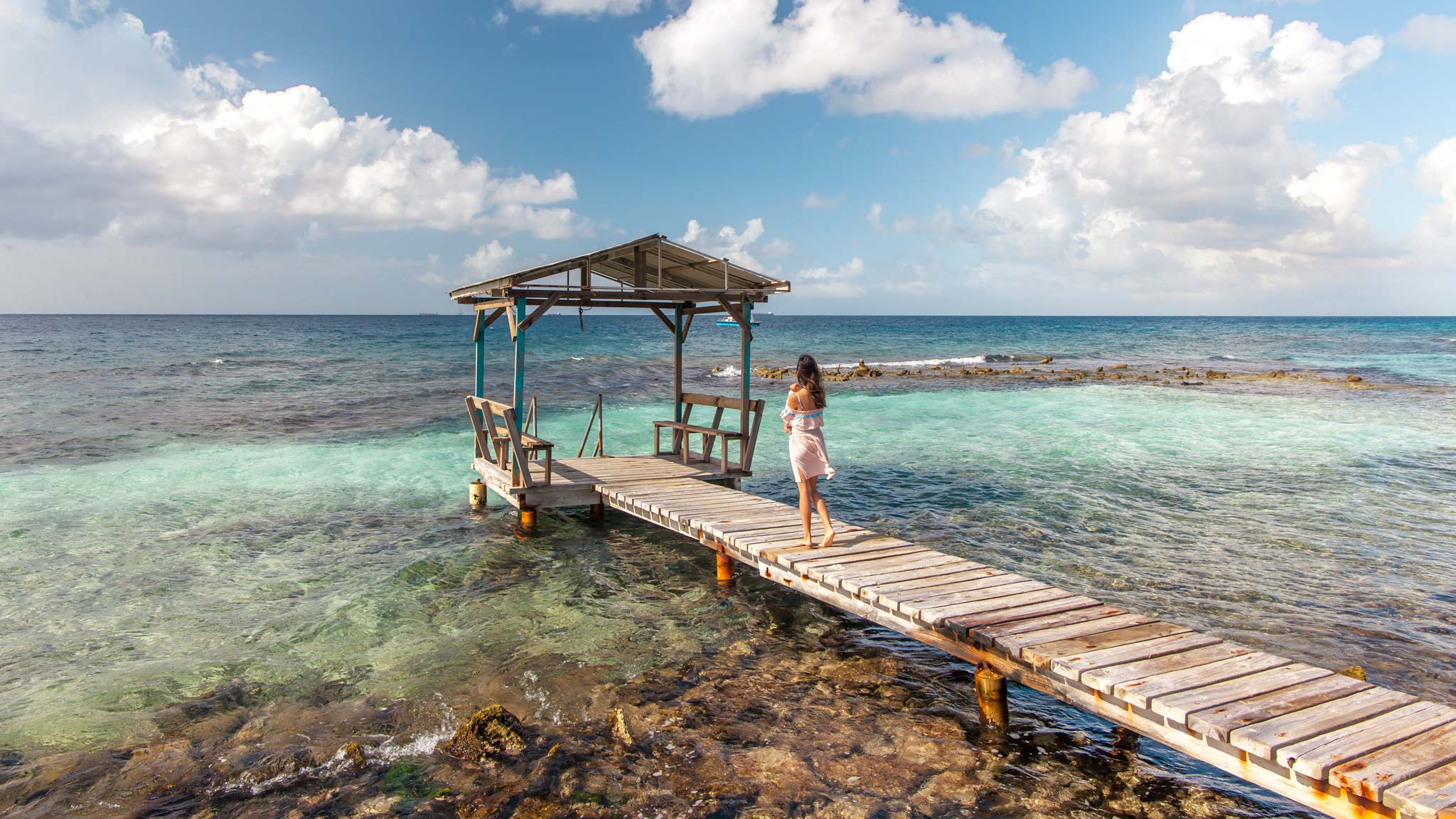
That warm Aruba welcome
Something I’ll always wax lyrically about is the warm welcome I experience in Aruba. From the serenades of the airport band on arrival to the insightful conversations about local life I shared with many Arubans I encountered, this island just feels like a place where you can let your guard down.

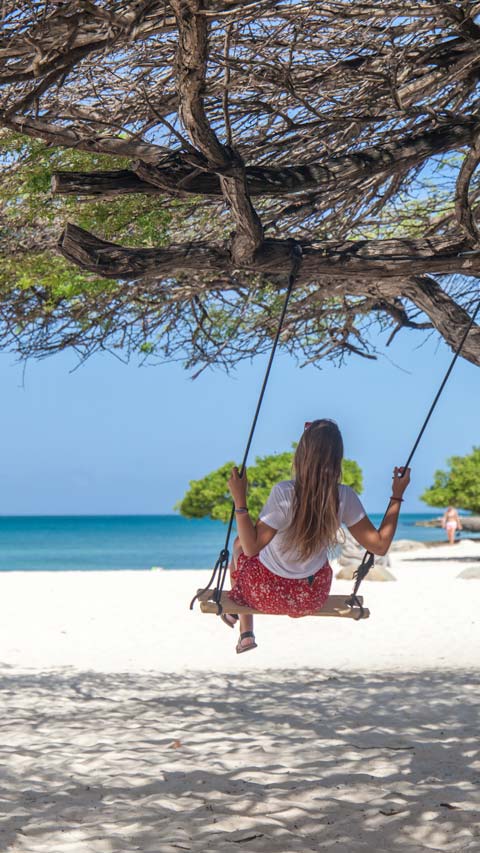

Ever-growing environmental credentials
Aruba’s ongoing work and commitment to being more environmentally friendly is well documented, with the end goal of becoming a true ecotourism destination. Plenty of commendable initiatives for a country of this size are being implemented, with the target goal of a transition to 100 per cent renewable energy being the desired endpoint. The tap water is also safe to drink thanks to a decent desalination plant.
In addition, a total ban on single-use plastics came into force in late 2022, and you’ll want to research the best reef safe sunscreens to pack (they often cost more on the island), as those that contain reef-damaging oxybenzone were also banned a few years back. Protection of the reefs is paramount, so supporting this step is really important. You’ll also find a growing number of eco-certified accommodation offerings across the island.
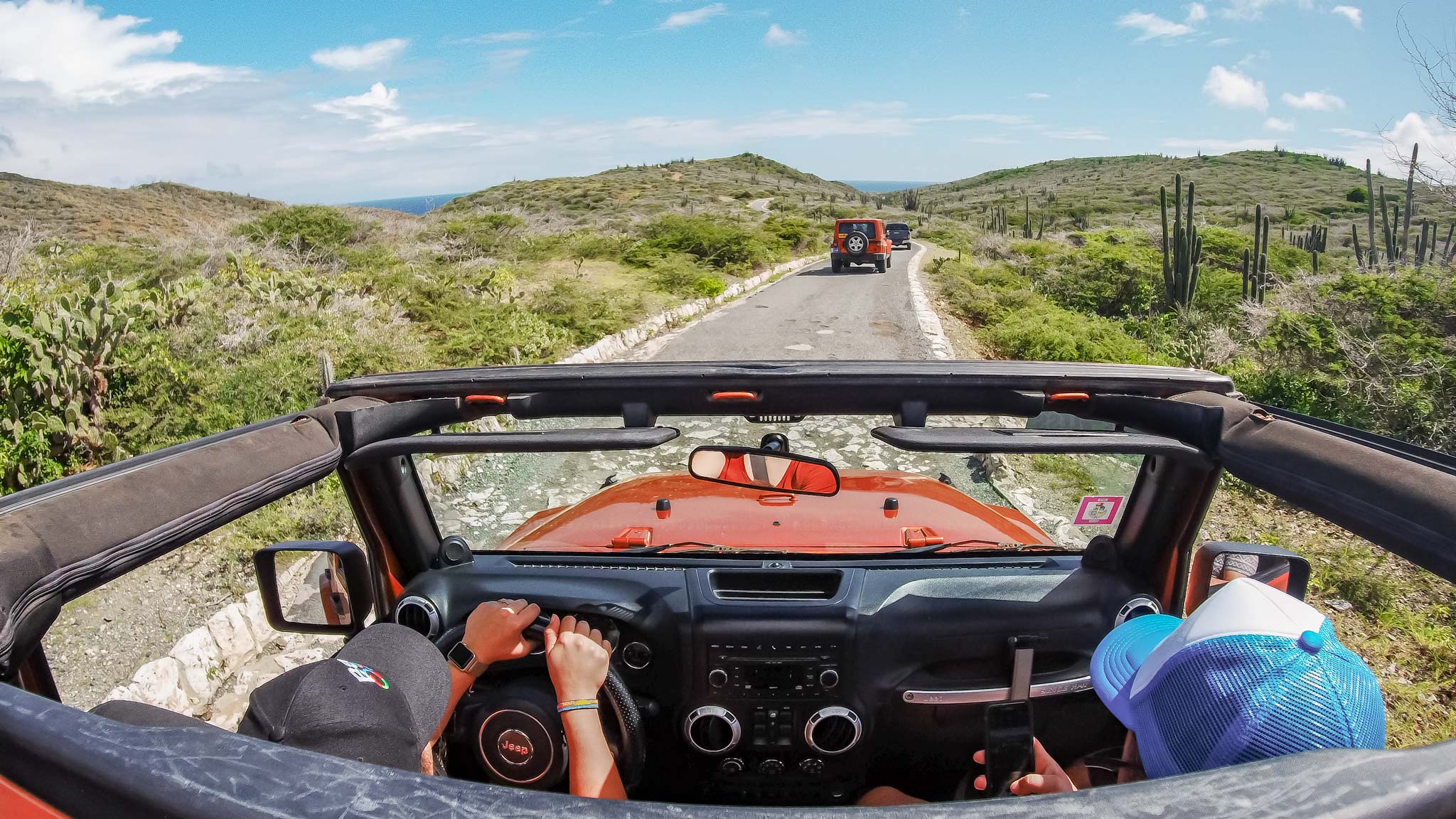
Adventures in Arikok National Park
Inland, Aruba’s landscape provides a stark contrast to the developed coast. Nowhere is that truer than the arid inland section of Arikok National Park, which shifts from scrub and cave-defined landscapes to roaring waves and footprint-free bays. Covering around 20% of the island, the national park is part ecotourism destination and part reserved for research.
Hiking and bike trails provide a sustainable alternative to exploring by 4WD, and you can easily spend a full day or more in the park. Visit the Quadirikiri and Fontein Caves, where sunlight streams through natural skylights, illuminating cave paintings from the island’s earliest inhabitants, the Caquetio.
Outside, tackle the trails through craggy and cacti-consumed scenery before relaxing on remote Dos Playa beach. But this cerulean-hued coastline isn’t just for admiring; natural swimming pools offer wild bathing not far from a protected turtle nesting spot. Arikok might not be your typical Caribbean landscape, but it’s certainly reason enough to visit Aruba.
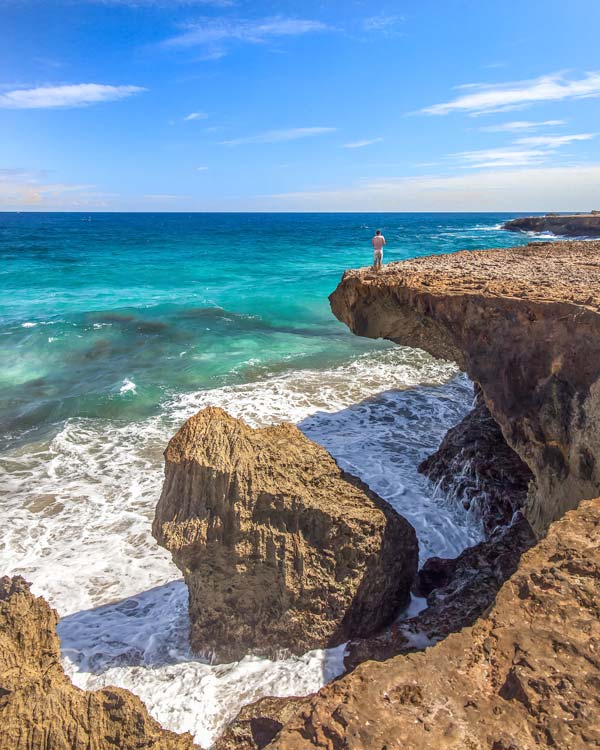

Water sports and scuba diving
Want a key reason why you should visit Aruba? Water sports. This island’s famed sands and lapping waves offer plenty of beachside relaxation, but those with restless sandy feet can indulge in a plethora of options, from SUP on calm waters to kitesurfing the windswept coast. Most of the popular beaches along the coast have plenty of boards and equipment for hire, and the prices were pretty reasonable for the Caribbean.
Beyond the shoreline, there are multiple shipwrecks which have created the most compelling reason to visit Aruba for scuba divers or those who wish to get their scuba diving certification. Sure, the deep wreck dives — there’s even a sunken aeroplane — might not be for beginners, but the warm, calm and clear waters make it a great place for learner divers. Don’t miss the mighty USS Antilla shipwreck — the largest wreck dive in the Caribbean — or any of Aruba’s other best diving spots, which I’ve written about here.
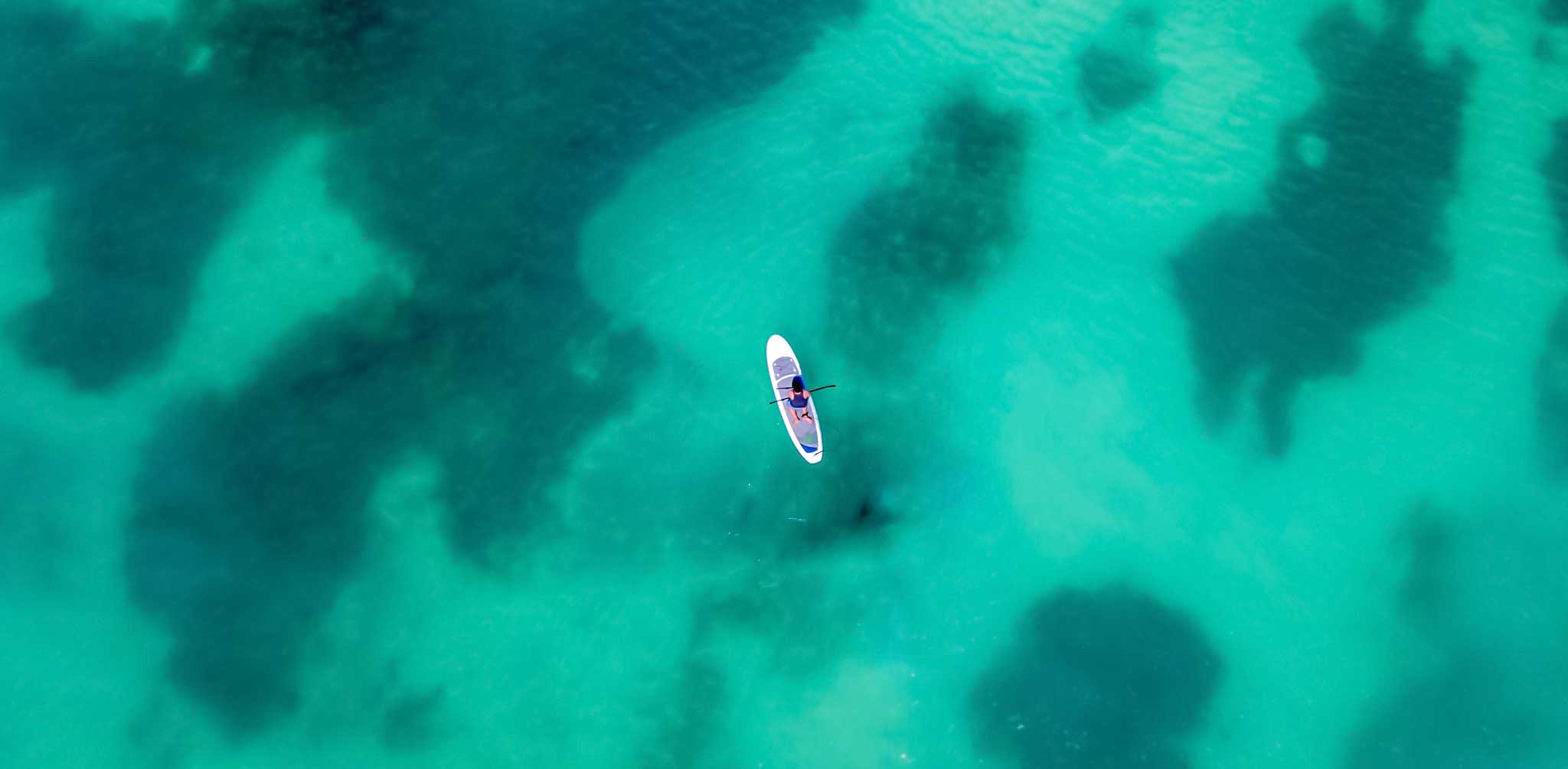
Stargazing away from the resorts
Aruba is perhaps not known as a star-gazing destination, but don’t let that put you off from heading outside to admire the night sky. Honestly, I was pretty surprised and impressed by how the light pollution of the resorts quickly fades, giving way to some wonderful constellations viewing opportunities.
In and around Arikok National Park, you’ll find some of the best conditions — although parts of the park have restricted entry by night. If you have a car, or ideally a 4WD, you’ll be able to easily head off and find some fantastic vantage spots and see the night sky awash with stars.
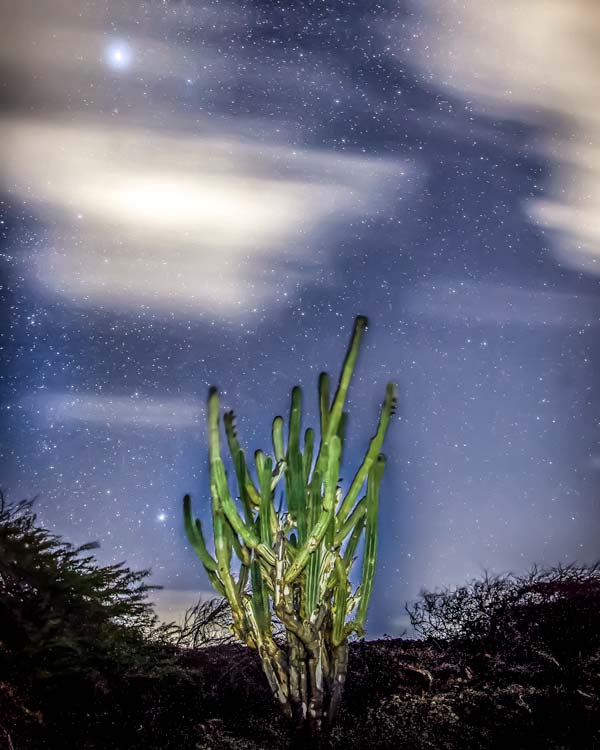

The colourful capital of Oranjestad
Aruba’s capital city, Oranjestad, is sprinkled with splashy colonial buildings — the island was colonized by the Dutch (amongst others) and, indeed, still remains a country within the Kingdom of the Netherlands — in various pastel hues and even neon shades that would make the Barbie set blush. This makes it a colourful and photogenic first and last stop on the island.
It’s very much a safe, walkable city to explore, but even still, a colourful free tram service runs throughout the town so that you can get around even easier; it is worth jumping on for the novelty alone. Visit during the day for strolls and visits to cultural institutions and the archaeological museum, but also at night for walking tours and enjoying local dishes. There’s plenty of evening entertainment, from live music in the restaurants to late-night bars.
While there are plenty of the shops you would expect at a popular cruise destination, such as high-end designer boutiques, there are still plenty of local stores and artisan shops away from the front-line ocean malls — the Casa di Culture community art centre, and BAZ RRR Gallery, being great places to buy local souvenirs.
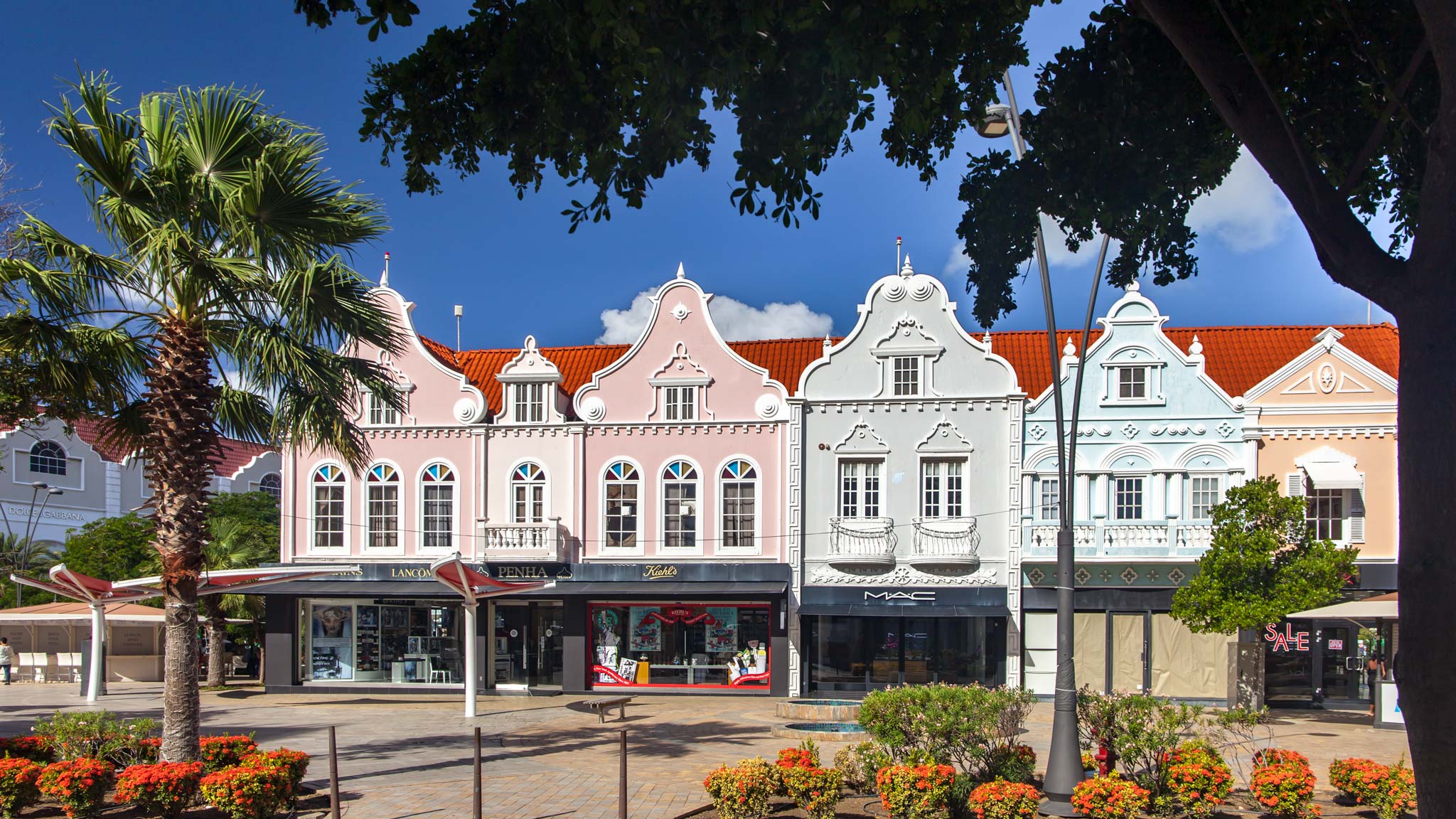
Culture, carnival and creativity in San Nicolas
The annual carnival celebrations are reason enough to visit Aruba. It’s more than just a big deal here, with the carnival celebrations lasting over a month. Starting in January and ending with the biggest parades taking place the week before Ash Wednesday in February, this is an excellent time of year to visit.
Still, if you aren’t lucky enough to time your visit to Aruba with the carnival, fear not, as the cultural hub and southern city of San Nicolas provides plenty of colour and art instead. Once an almost no-go area for tourists, the second city of San Nicolas has enjoyed a huge revitalisation in recent years. Street art and murals from local and international creatives now adorn walls, buildings and squares, while a museum dedicated to carnival and an art space can also be found here.
Take a walking tour around the city with a local guide, and try to visit one of the pop-up ‘mini carnival’ events with live music, street dancing, and great local food — this was absolutely a highlight of my visit to Aruba.

Aloe farms and luxury pampering
Aruba Aloe is a whole industry in itself, transforming the island’s abundance of this now-revered plant into luxury creams, gels and other products — the lip balm with a coconut flavour is always in my travel bag these days. But it’s nothing new, as Aruba Aloe claims the title of the oldest Aloe company in the world,
While a tour around the Aloe farm and factory is possible, it’s likely best to appreciate this plant’s healing properties via a spa treatment and a bit of pampering.
Most high-end and middle-range hotels in Aruba have a spa offering, with options such as beach-side massages and rejuvenating treatments popular. It’s also possible to visit many of these spas with day passes. Okeanos Spa at the Renassaince and Intermezzo Day Spas for their open-air treatments are ones particularly worth booking in advance.
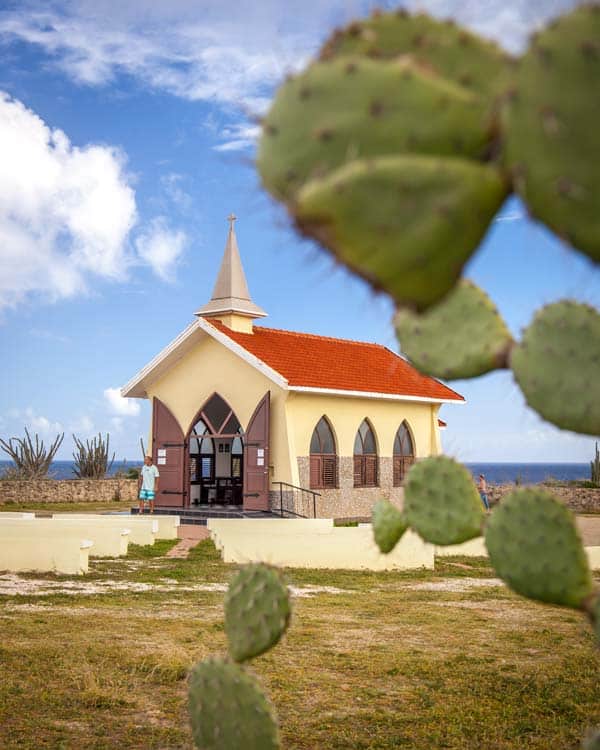
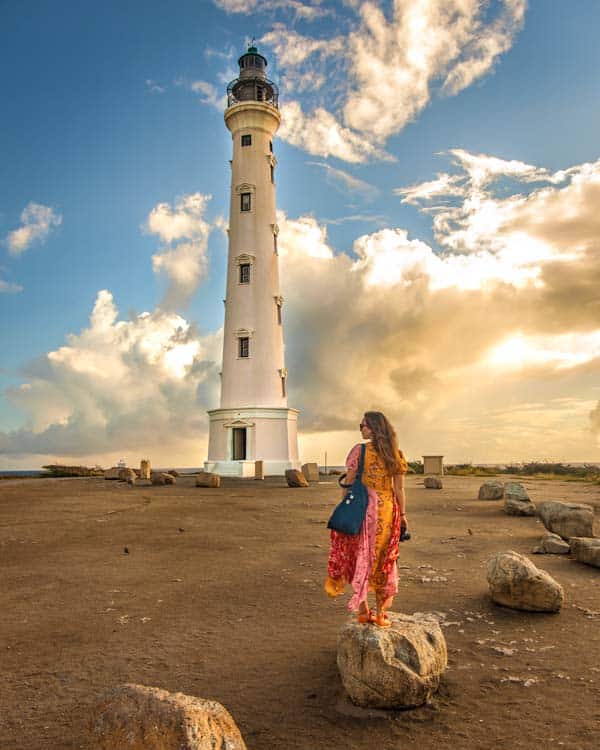
Pocket-sized side trips
Let’s be honest: when it’s hot and you’re in the Caribbean, trekking around all day in the heat, ticking off lots of different attractions, is far from appealing. Thankfully, Aruba’s handkerchief size (around 70 square miles) means you’re never far from one of those alluring beaches. As such, bite-size and half-day trips to the island’s attractions are not overwhelming and can easily be paired with a lazy afternoon on the beach.
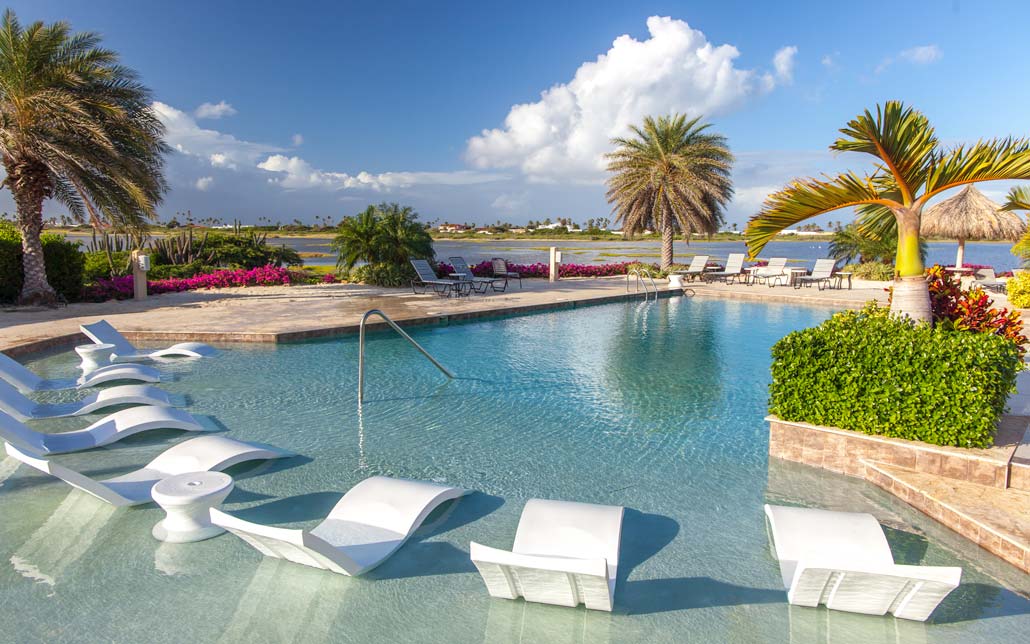
An array of cuisine
Like Aruba’s languages — two official, Papiamento and Dutch, and two unofficial yet spoken by many, Spanish and English — the island’s cuisine is equally as diverse, taking inspiration from across the globe. Typical American dinner dishes are found alongside Dutch, Indonesian and Creole cuisine on menus, while local rums and even the island’s first boutique winery make for perfect pairings. Whether it’s typical fast food, dining in luxury resorts, or picnic poke bowls on the beach, you can find pretty much anything, ranging from cheap street food to super expensive and exclusive options.
That said, there are still plenty of local dishes well worth sampling, such as pan bati (sweet flat-bread) and warming stews, like kabritu stoba (goat) and keri keri (fish), being two of the most popular.
To get a bite-size introduction to both the history of the island and the multi-cultural foodie offering, join one of the fantastic Aruba Walking Tours around Oranjestad, which includes stops at local restaurants for the price of a sampling of various dishes. Oh, and don’t forget to add a splash of Hot Delight’s Madam sauce for a spicy kick.
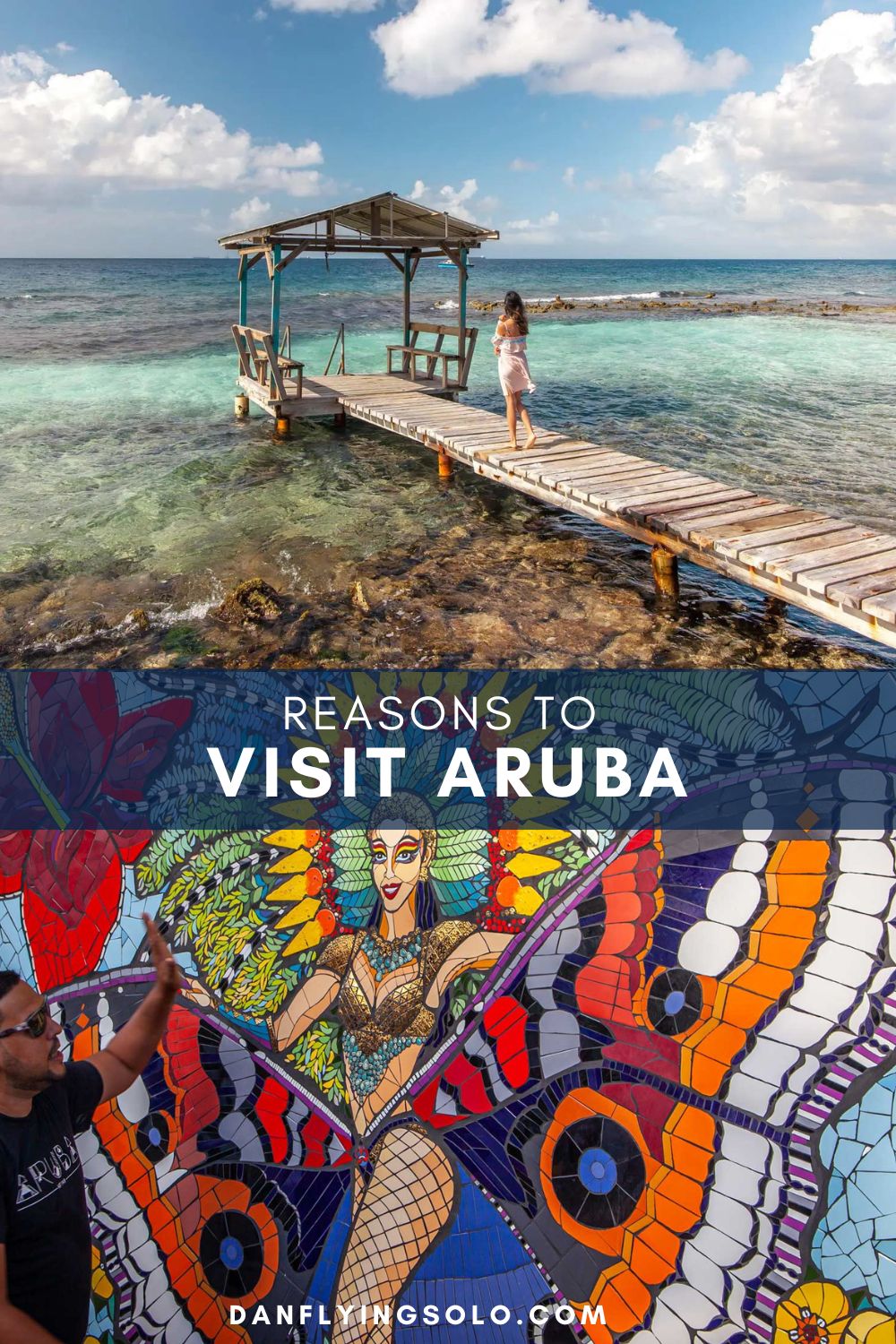
Ideal for everyone
Lastly, and often the most appealing reason to visit Aruba, is how the island attracts and welcomes such a broad spectrum of travellers. Whether it’s a trip with your mates, a romantic getaway as a couple, or an extended family vacation, Aruba is sure to please.
The climate is pleasant, yet not too hot. The beaches are lazy-heaven, while those who want to hike or have adventures can do so. You can book upscale resorts, private apartments or more budget stays. And the food scene covers pretty much anything, even for the fussiest of eaters.
As such, I really do think it’s a safe bet as a holiday destination for anyone. There is literally nothing not to like, which is rare for me to say of a place. And while other islands in the Caribbean dazzled me in different ways, such as the lush green hiking of Dominica or the seemingly never-ending beaches in Antigua and Barbuda, they didn’t seem to tick as many boxes or offer such a crowd-pleasing array of options.
So, if you are looking for an easy, relaxing and, most importantly, happy island escape, I hope these reasons to visit Aruba have helped cement the island’s place in your Caribbean wishlist — perhaps you’ll be hearing bon bini yourself soon.

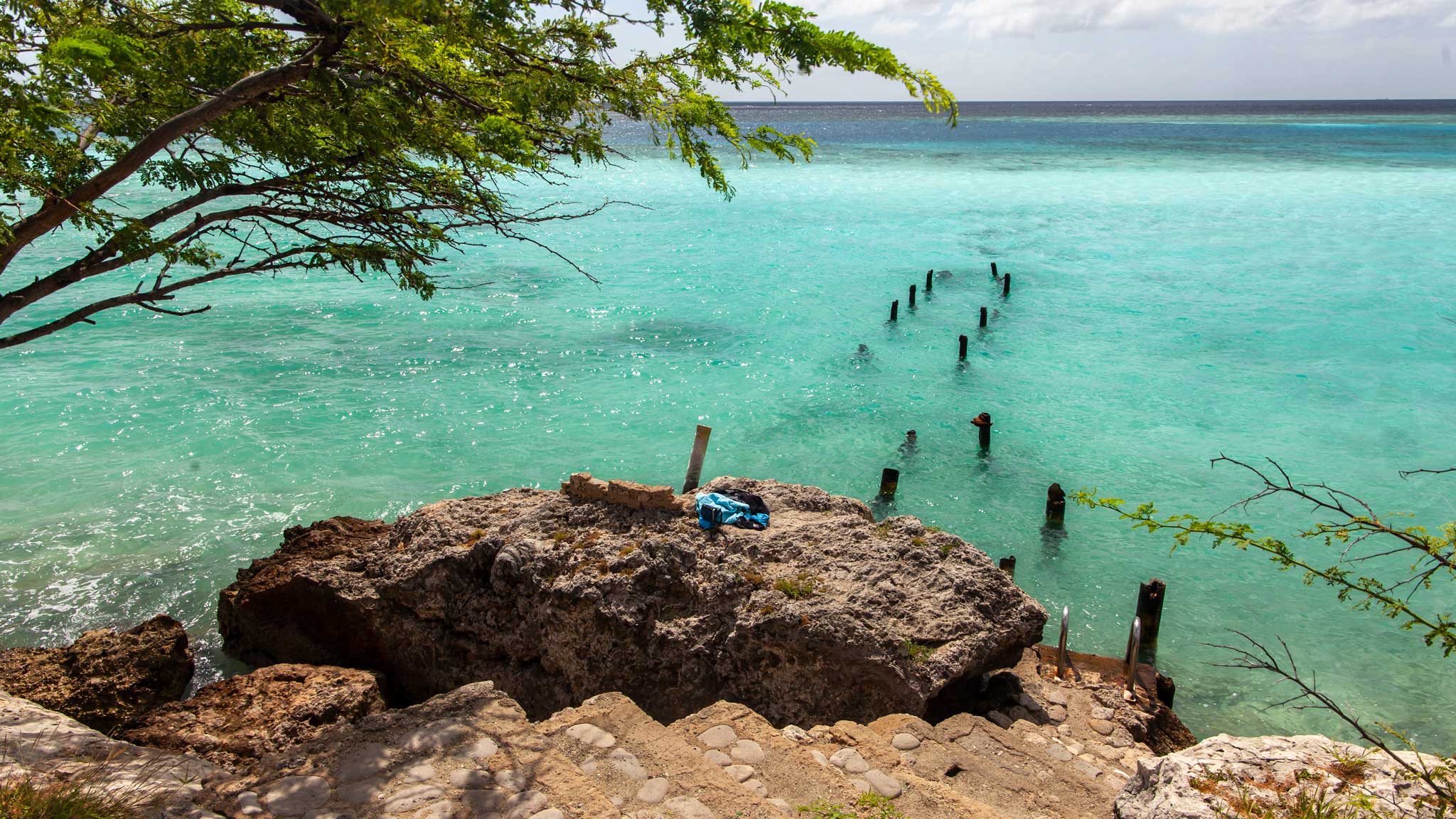



Aruba looks amazing! I visited Jamaica many years ago, but Aruba must be even better.
I really enjoyed my time in Jamaica too, but found the access to beaches and ‘holiday’ factor more freeing on Aruba.